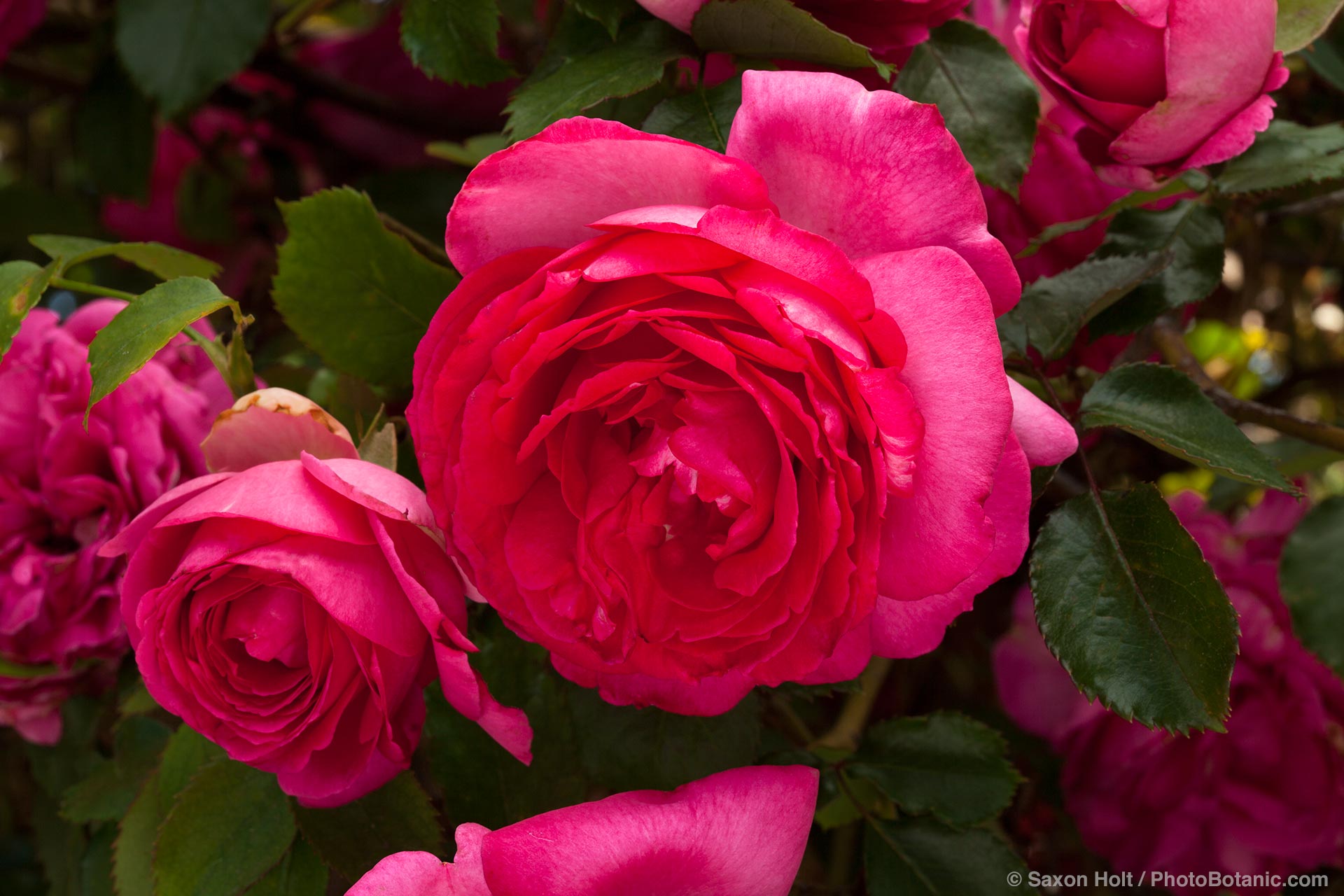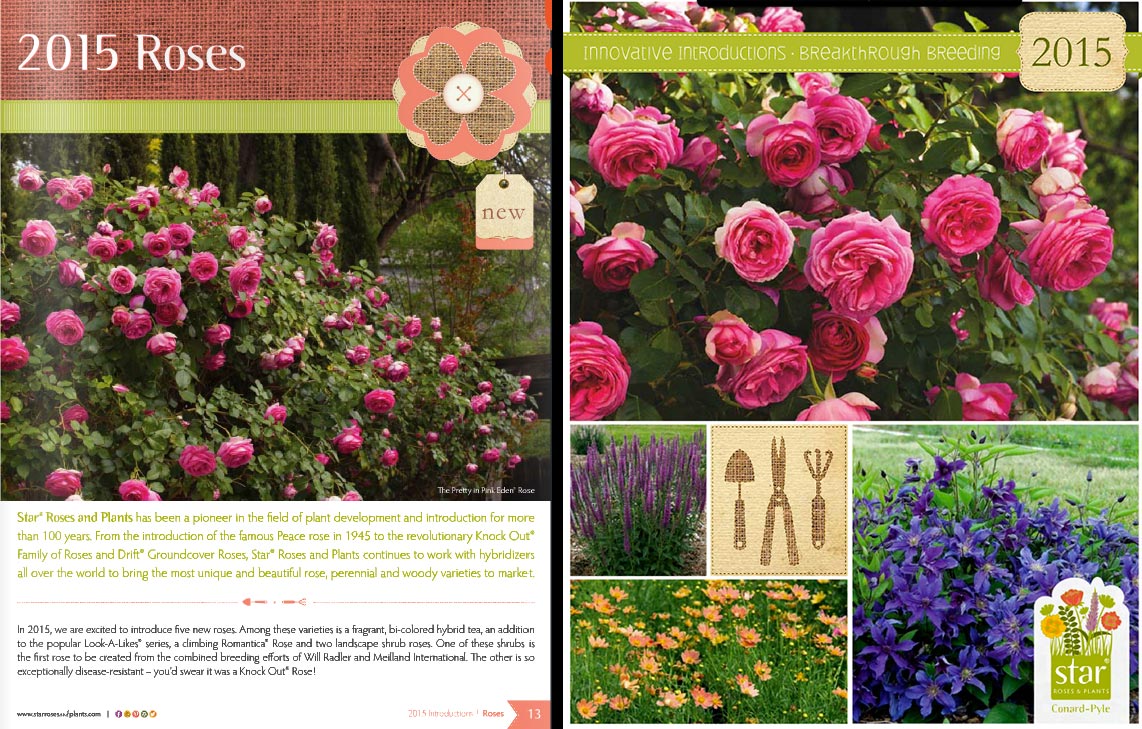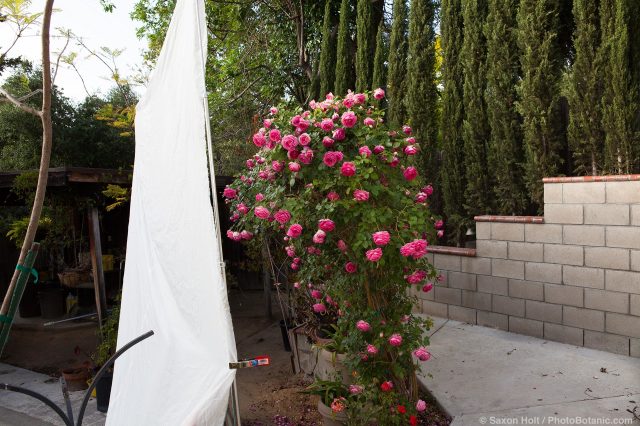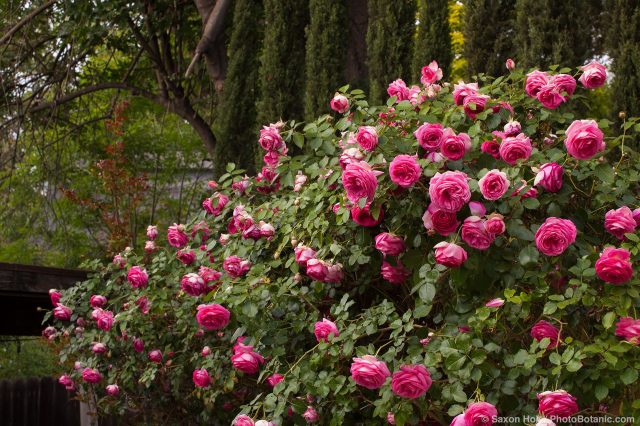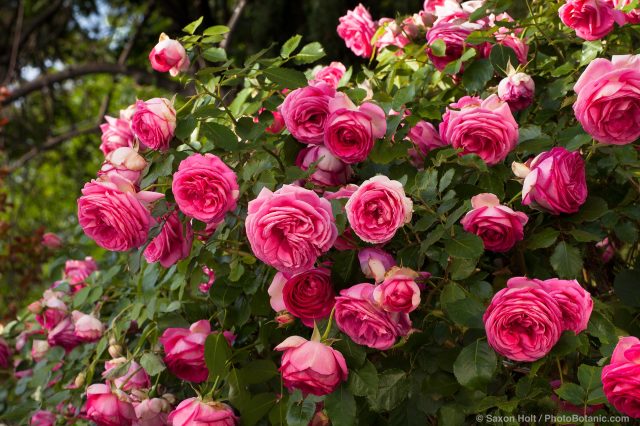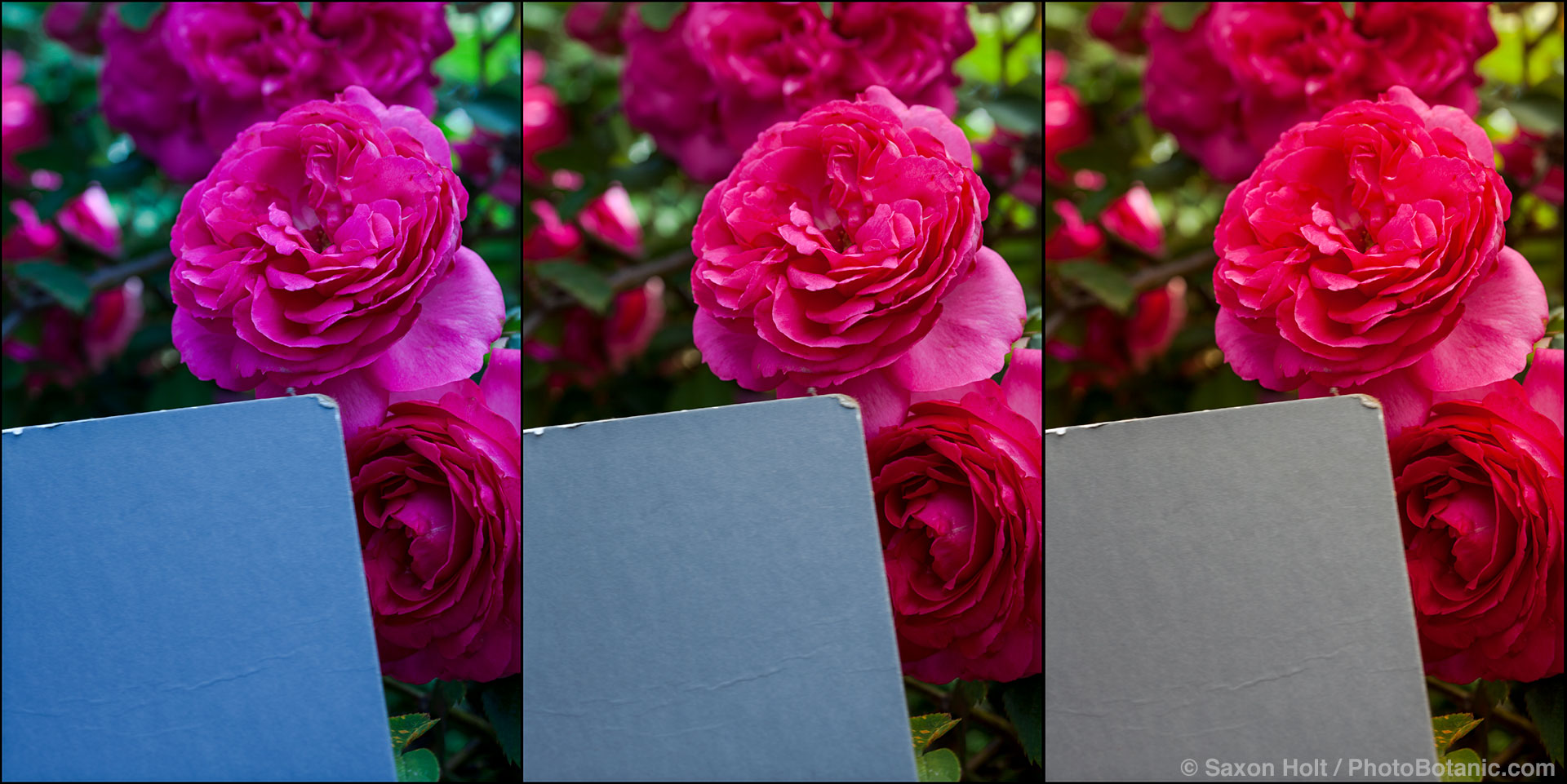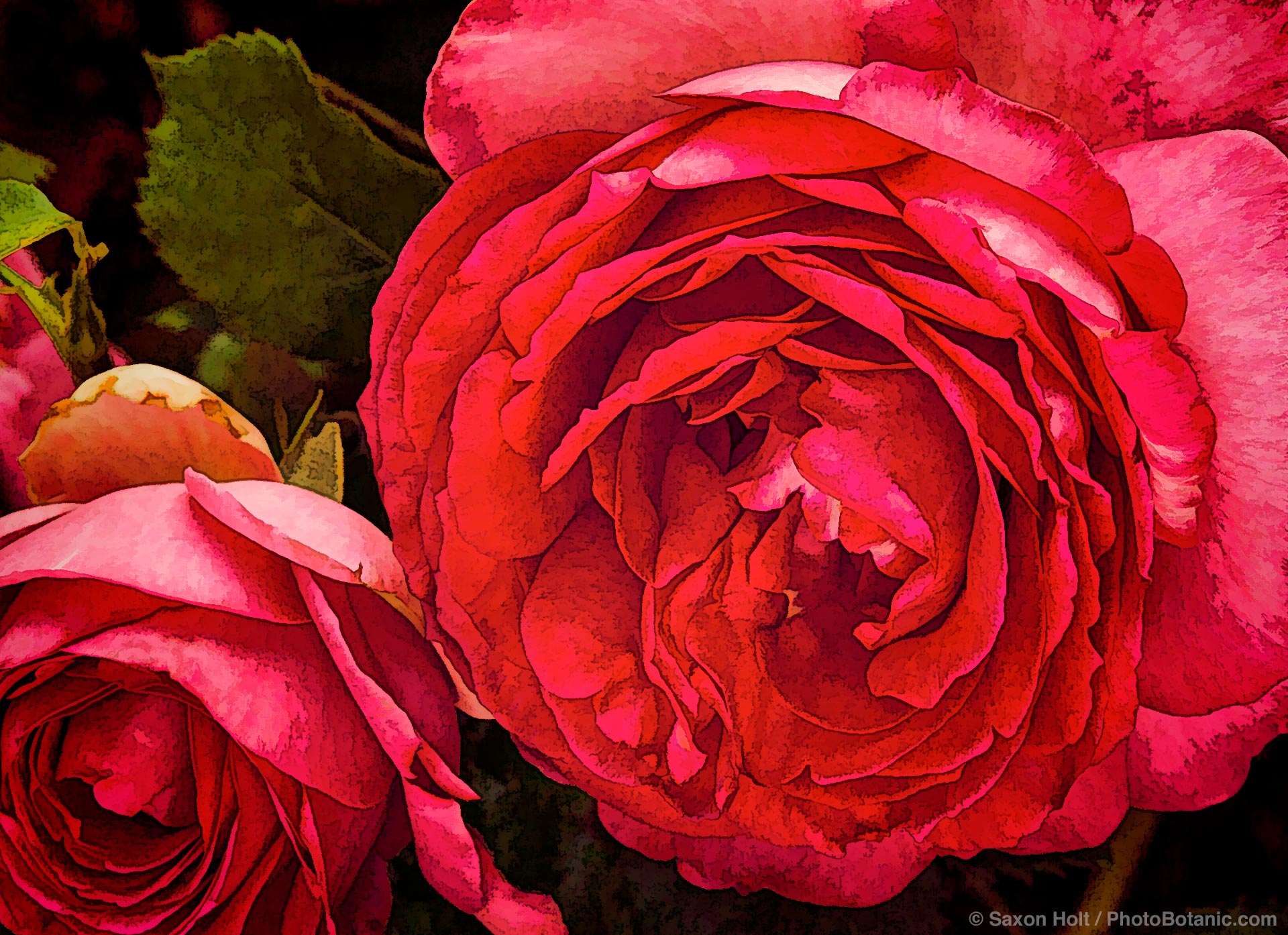A new rose takes years to reach the market. The process of breeding, testing, analyzing, selecting, and then propagating enough to sell, and then marketing, all have timetables. The rose above that I photographed for Star Roses two years ago with no name, is now being released.
When I was asked to photograph this rose, all I knew was there was only one place to find it in a garden, at the home of a private rose grower in Southern California who had discovered and grown a red sport of Eden® – one of my favorite roses. A sport is a genetic mutation that results in a segment of the plant that is distinctly different from the parent. Many new plants are introduced into horticulture from sports, be it dwarfism, variegation, or new flower color.
This deep pink sport of Eden retained the growth habit (a climber), and the disease resistance of the parent, but also has more petals and is more fragrant. It was simply ‘Pink Eden’ at the time and is now released for 2015 as “Pretty in Pink”.
Photographing roses for a catalogue can be tricky. Of course, first the color correct has to be correct; then showing the growth habit and shape of the flowers need to be right. While I often get to photograph in lavish estates and botanic gardens, the grower lived in a very modest home. But, oh lordy, did pink Eden look good.
Hot, contrast sun is the enemy of good garden photography which is a big reason I like to work very early or very late in the day. Given I had one opportunity on this one day to get the photos, I set up a a large scrim.
The scrim is similar to parachute cloth and softens the light coming through it, so I set it up to block the afternoon sun while I went about finding a camera angle to show off the rose.
You will note the angle was flopped in the catalog so that it “read” better left to right on the page and allowed for the “New” tag to be on the right. You are not supposed to ask me what other retouching I might have done to make it look so floriferous in the catalog. Would a photo lie ?
But looking at the actual scene around the backyard should tell you all you need to know. It’s an amazing rose growing in a very nondescript setting.
By the time I got the photo that Star Roses eventually used, the sun was low behind some other trees and the light was getting soft. The scrim did block a few blotches of sunlight but it was actually more useful blocking the wind. To get good depth of field I need a fairly long shutter speed which then means the slightest shake in the flower makes it look blurry. Wind too is the enemy of any flower photographer.
Getting the color correct is another challenge. Light changes color all during the day. While our brains tend to adjust to that, the camera does not. There is a white balance control on most digital cameras that allows the photographer to adjust to differing light situations but that is not quite good enough for catalog work. “Pink” looks different to every eye in every light situation so there needs to be an accepted way to calibrate a camera.
I use a simple gray card that I hold in front of a scene.
The gray card (from a photo store) is a known, standard color that can be used to calibrate the files when they are later imported into the computer. I put the gray card into the scene just before I take the photo so the light doesn’t change.
Note how three different temperature settings in the camera can give three different colors. The three color temperatures from cool to warm might all be considered “right” if seen in isolation.
Now, two years after I saw the rose, the rose is now public – I have the excuse to look again. There is a right way to photograph for a catalog and another way where the photo is just a starting point.
The PhotoBotanic Garden Photography Workshop is finally only weeks away from launch…

